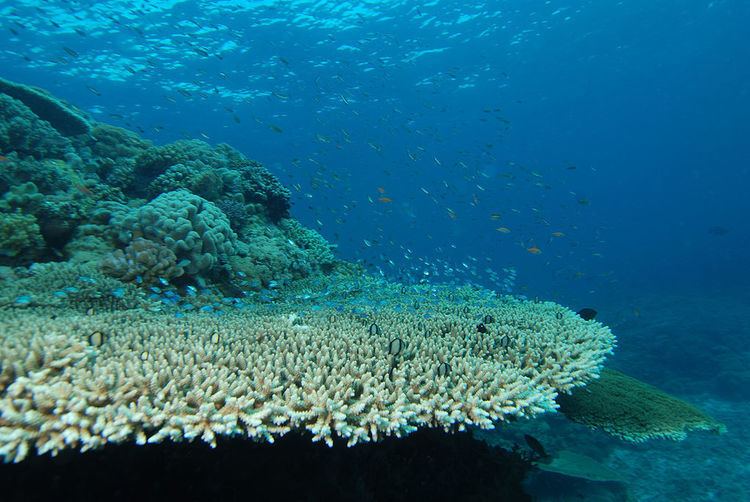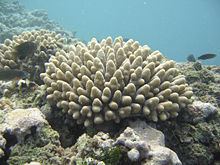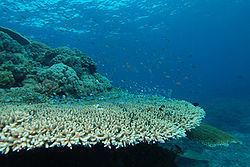Kingdom Animalia Scientific name Acropora Rank Genus Order Scleractinia | Family Acroporidae Higher classification Acroporidae Phylum Cnidaria | |
 | ||
Lower classifications Staghorn coral, Elkhorn coral | ||
Mutant table acropora
Acropora is a genus of small polyp stony coral in the phylum Cnidaria. Some of its species are known as table coral, elkhorn coral, and staghorn coral. Over 149 species are described. Acropora species are some of the major reef corals responsible for building the immense calcium carbonate substructure that supports the thin living skin of a reef.
Contents
- Mutant table acropora
- Acropora coral care and troubleshooting
- Anatomy and distribution
- Threats
- Reef keeping
- References
Acropora coral care and troubleshooting
Anatomy and distribution

Depending on the species and location, Acropora species may grow as plates or slender or broad branches. Like other corals, Acropora corals are colonies of individual polyps, which are about 2 mm across and share tissue and a nerve net. The polyps can withdraw back into the coral in response to movement or disturbance by potential predators, but when undisturbed, they protrude slightly. The polyps typically extend further at night to help capture plankton and organic matter from the water.

Acropora is most common in shallow reef environments with bright light and moderate to high water motion. Many small reef fishes live near their colonies and retreat into the thicket of branches if threatened.
Threats

Symbiodinium, symbiotic algae, live in the corals' cells and produce energy for the animals through photosynthesis. Environmental destruction has led to a dwindling of populations of Acropora, along with other coral species. Acropora is especially susceptible to bleaching when stressed. Bleaching is due to the loss of the coral's zooxanthellae, which are a golden-brown color. Bleached corals are stark white and may die if new Symbiodinium cells cannot be assimilated. Common causes of bleaching and coral death include pollution, abnormally warm water temperatures, increased ocean acidification, sedimentation, and eutrophication.

In 2014 the U.S. Fish and Wildlife Service has listed 10 Acropora species as Threatened. The species are distributed in the Indo-Pacific (8 species) and Caribbean (2 species).
Reef-keeping

Most Acropora species are brown or green, but a few are brightly colored, and those rare corals are prized by aquarists. Captive propagation of Acropora is widespread in the reef-keeping community. Given the right conditions, many Acropora species grow quickly, and individual colonies can exceed a meter across in the wild. In a well-maintained reef aquarium, finger-sized fragments can grow into medicine ball-sized colonies in one to two years. Captive specimens are steadily undergoing changes due to selection which enable them to thrive in the home aquarium. In some cases, fragments of captive specimens are used to repopulate barren reefs in the wild.
Acropora species are challenging to keep in a home aquarium. They require bright light, stable temperatures, regular addition of calcium and alkalinity supplements, and clean, turbulent water.
Common parasites of colonies in reef aquariums are the Acropora-eating flatworm, and "red bugs" (Tegastes acroporanus).
